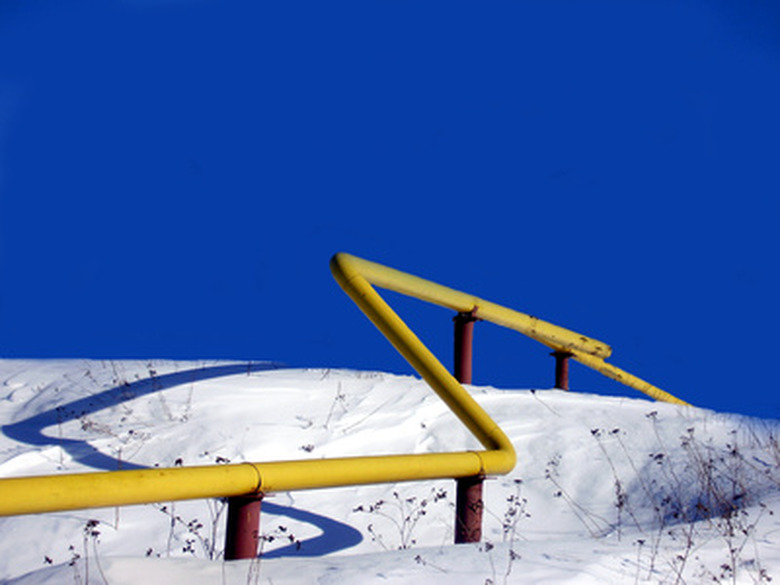How To Calculate The Gas Loss In A Pipe
When a gas pipe has a hole or a break in it, the pipe leaks gas continuously. The rate of this gas flow depends on two factors. A larger pressure of gas produces a larger force expelling the gas. A larger hole provides a greater area over which that pressure can act. You can determine the gas pressure, if you don't know it, using a pressure gauge. To factor in the area, consider the hole's diameter if it is round or estimate its approximate diameter otherwise.
Step 1
Add 14.4 to the pipe's pressure, measured in pounds per square inch, to convert it to absolute pressure. If, for instance, the pressure is 27 pounds per square inch: 27 + 14.4 = 41.4 pounds per square inch.
Step 2
Square the diameter of the hole in the pipe. If, for instance, the pipe has a break that measures 0.75 inches in diameter: 0.75 ^ 2 = 0.5625 square inches.
Step 3
Multiply together the answers to Step 1 and Step 2: 41.4 x 0.5625 = 23.29.
Step 4
Multiply the answer by 1,000, a conversion constant: 23.29 x 1,000 = 23,290 cubic feet of gas per hour.
Cite This Article
MLA
Menezes, Ryan. "How To Calculate The Gas Loss In A Pipe" sciencing.com, https://www.sciencing.com/how-7918141-calculate-gas-loss-pipe/. 7 August 2017.
APA
Menezes, Ryan. (2017, August 7). How To Calculate The Gas Loss In A Pipe. sciencing.com. Retrieved from https://www.sciencing.com/how-7918141-calculate-gas-loss-pipe/
Chicago
Menezes, Ryan. How To Calculate The Gas Loss In A Pipe last modified March 24, 2022. https://www.sciencing.com/how-7918141-calculate-gas-loss-pipe/
